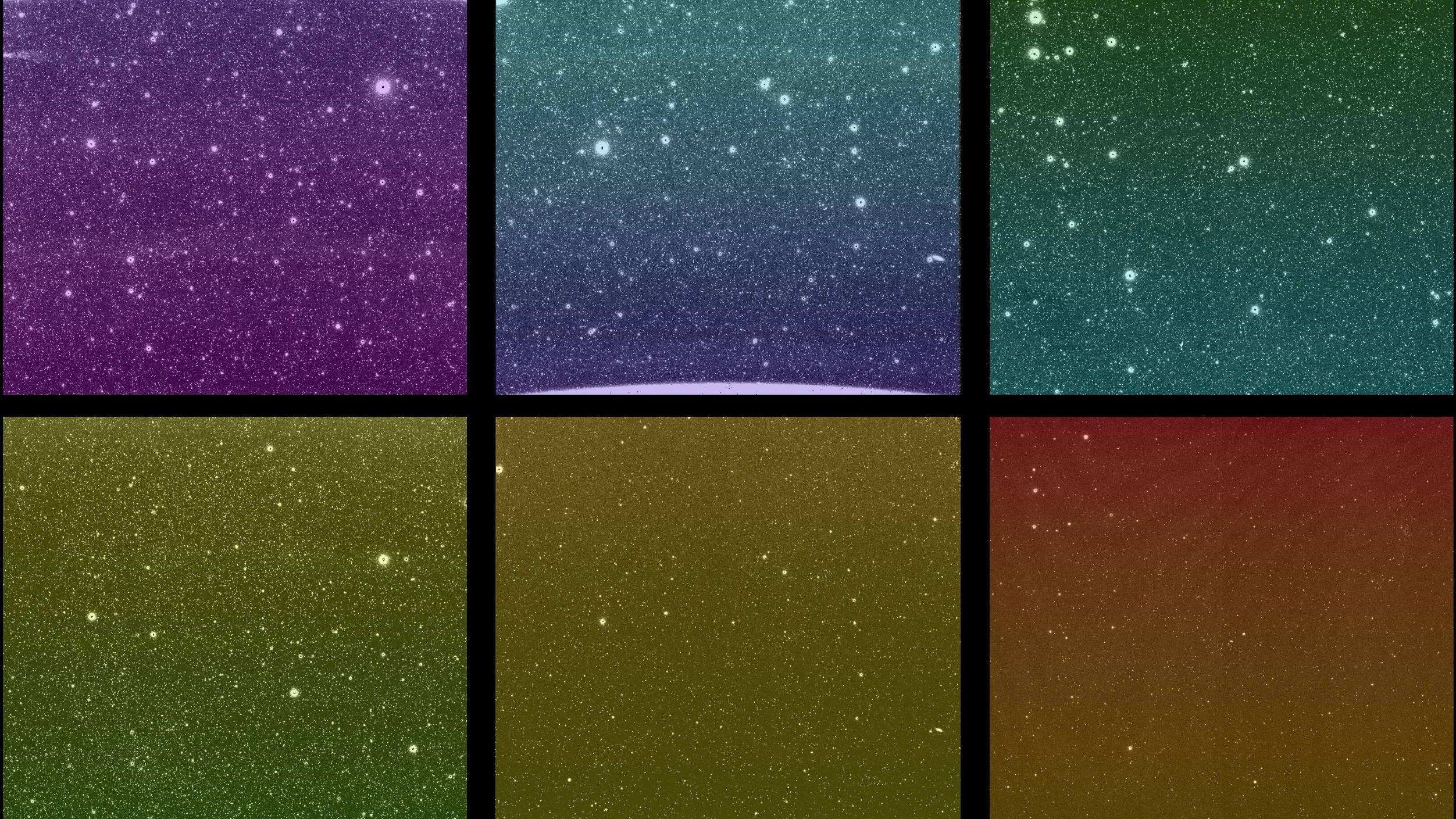
A new NASA space telescope has turned on its detectors for the first time, capturing its first light in images that contain tens of thousands of galaxies and stars.
The Spectro-Photometer for the History of the Universe, Epoch of Reionization, and Ices Explorer (SPHEREx) arrived in orbit atop a SpaceX Falcon 9 rocket on March 11.
The six released images, collected by the space telescope on March 27, were each snapped by three different detectors. The top three images span the telescope’s complete field of view, and are captured again in the bottom three which are colored differently to represent varying ranges of infrared wavelengths.
Within each image’s full field of view — an area roughly 20 times wider than the full moon — roughly 100,000 light sources from stars, galaxies, and nebulas can be glimpsed.
“Our spacecraft has opened its eyes on the universe,” Olivier Doré, a SPHEREx project scientist at Caltech and NASA’s Jet Propulsion Laboratory, said in a statement. “It’s performing just as it was designed to.”
Related: Euclid space telescope: ESA’s groundbreaking mission to study dark matter and dark energy
Costing a total of $488 million to build and launch, the new telescope has been in development for roughly a decade, and is set to map the universe by observing both optical and infrared light. It will orbit Earth 14.5 times a day, completing 11,000 orbits during its lifetime to filter infrared light from distant gas and dust clouds using a technique called spectroscopy.
Once it is fully online in April, SPHEREX will scan the entire night sky a total of four times using 102 separate infrared color sensors, enabling it to collect data from more than 450 million galaxies during its planned two-year operation. This amounts to roughly 600 exposures a day, according to NASA.
This dataset will give scientists key insights into some of the biggest questions in cosmology, enabling astronomers to study galaxies at various stages in their evolution; trace the ice floating in empty space to see how life may have begun; and even understand the period of rapid inflation the universe underwent immediately after the Big Bang.
SPHEREx’s wide panorama view makes it the perfect complement for the James Webb Space Telescope, flagging regions of interest for the latter to study with greater depth and resolution.
After lofting it to space, NASA scientists and engineers have performed a nail-biting series of checks on the new telescope. This includes ensuring that its sensitive infrared equipment is cooling down to its final temperature of around minus 350 degrees Fahrenheit (minus 210 degrees Celsius) and that the telescope is set to the right focus — something that cannot be adjusted in space.
Based on these stunning preliminary images, it appears that everything has worked out.
“This is the high point of spacecraft checkout; it’s the thing we wait for,” Beth Fabinsky, SPHEREx deputy project manager at JPL, said in the statement. “There’s still work to do, but this is the big payoff. And wow! Just wow!”
